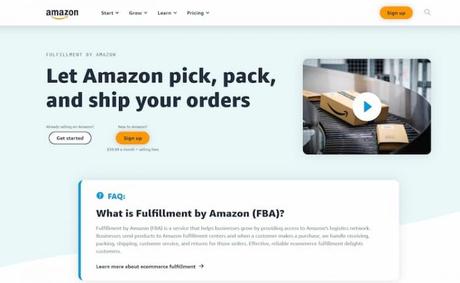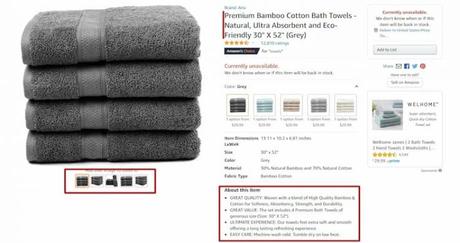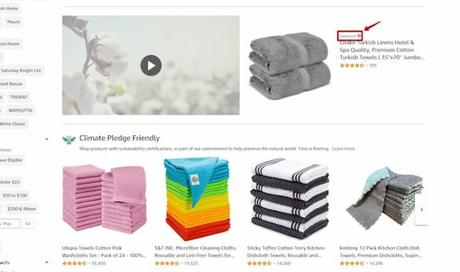More than half of what Amazon sells is through third-party providers. Many of these providers leverage the powerful Amazon FBA Business platform. If you want to know how to start an FBA business and use this platform, this is the guide for you.
What is Amazon FBA?
Amazon FBA, or Fulfillment By Amazon, is an eCommerce fulfillment service where Amazon handles your shipment and storage. Through in-house fulfillment, you leverage Amazon's broad reach, enabling you to take advantage of overnight shipping.

Amazon Prime members can get this service for free. Given the nearly 200 million people on Prime, this gives you many potential customers.
To leverage Amazon FBA, you first need to send your inventory to a local Amazon Fulfillment Center. A fulfillment center is a fancy way to say "distribution center." Here is where Amazon handles the shipment and storage of your products.
If you work with a small number of products, your first shipment will likely be through UPS. More oversized products may require full or partial truckloads. You also need to follow Amazon's stringent shipping requirements.
How To Start an Amazon FBA Business [Step-By-Step]
Check out this six-step process you can follow to improve your odds for success on Amazon:
Your niche is a fancy way to say your overall product category. These include electronics, kitchenware, and baby toys.
If your ultimate goal is profit, you might pick a niche and initial product based on the same reasons. Here are some product generalizations to keep in mind:
- Stick with products that are small and only weigh a few pounds to save on shipping.
- Choose products that customers use every day, not seasonal products.
- Pick items that have no mechanical pieces and are not easy to break.
- Choose products that are $15 to $50 to ensure you can make a decent profit quickly.
- Products should have high demand and sell enough units to make you money.
- Products should have low competition (around two or three sellers with no clear selling leader).
Regardless of how you pick it, you need to make a profit. So choose a third-party tool that helps you calculate FBA fees.
You also want to narrow your niche using current trends. Here are some tools for this:
- Google Trends - Analyzes the search volume and historical data of what people search on Google
- Amazon Trend Report - Talks about Amazon's trends based on data from previous years.
- Social Media - Pinterest and Twitter are two powerful social media locations where you can quickly sort through trending topics.
- eCommerce Sites Best Selling - Amazon has the Best Sellers and Movers & Shakers list to find trending products.
After finding your ideal product, move on and create an Amazon Seller Account. If you already have an Amazon account, you can use it for personal and business purposes.
If not, you'll need to sign up using your e-mail, address, phone number, and other identifying data. You will also need to provide your bank routing and checking number, so Amazon has somewhere to send your money (and take it).
Individual accounts have a per-listing fee of $0.99, while professional accounts cost $39.99 per month with no listing fees. You will need one of the two options to maintain an Amazon Selling Account.

Here's what you will need to do regardless of what account type you want:
- Provide back/front pictures of your driver's license.
- Verify your bank through Amazon's system.
- IF bank verification fails, you will need to provide current bank statements.
- Provide a code from a postcard sent to your address to confirm you live there.
- Perform a video interview where you will need to display your driver's license and bank statements.
Amazon does not require you to have an EIN, or Employee Identification Number, to work with them. Amazon works with both individuals and official business entities.
Once you finish creating your account, you will need to source your products. Depending on what you want to sell, this process might look different.
Below are some of the most popular methods to source your products:
- Online and Retail Arbitrage - This process involves looking for online or local sales that you can buy in bulk. From there, you can purchase the products at the sale price and resell them at a markup. Retail arbitrage involves finding local sales (or store closings), while online arbitrage involves using online shops with sales.
- Wholesale - Wholesale involves the process of contacting either online or local products creators and offering to sell their product. Like arbitrage, wholesalers get special resale pricing, resulting in bulk discounts. You also work with currently established brands, meaning you will compete with other listing owners.
- Private Label Selling - Private label selling is where you take goods a third party has manufactured and put your branding on them. Alibaba is one of the more famous examples of this. Because you create your listing, you don't need to share space with other sellers. However, you will need to pay more considerable sums at first to create exposure to your listing.
- Dropshipping - Dropshipping is the process of reselling other people's products without ever handling stock or shipping. Under usual FBA, you would ship products to the fulfillment center. Dropshipping is where the supplier takes shipment for you, shipping to FBA or handling it themselves. Income is typically small under these categories. Modalyst is one popular example of a dropshipping supplier.
When finding a supplier through one of these methods, you'll want to be sure of their reputation-looking them up online and seeing their reviews will be essential when confirming their quality.
After you've found what your product is and how you will get it, you must create your product listing. When doing this for one listing, this is relatively easy. However, you will need to fill in a title, description, backend keywords, and images.

The process of listing your products well is known as listing optimization. Optimization involves creating something more appealing to Amazon, increasing your potential ranking.
Here are some quick tips for listing optimization:
- Choose high-quality images, ensuring that the first image has a completely white background (RGB 255,255,255). You will want to include pictures of people using the product as well.
- Choose one primary keyword that has a long-tail target. Long-tail keywords include four or more words that do the best at describing your product (i.e., glass top electric grill is better than "electric grill."
- Place this long-tail keyword at the front of your title after the brand. Use the keyword alongside secondary keywords throughout your description.
- Provide excellent detail of why people should buy your product in the description. Address all potential doubts and benefits your target audience might be interested in.
- Place any more secondary keywords under the "backend keywords" box. This is your list of secondary keywords (those that didn't make sense in the description).
- Use Amazon PPC and third-party analytical tools (like AMZScout) to populate your keyword targets.
Amazon PPC, or Pay Per Click, is an incredibly efficient advertising method. It is efficient because you only pay when someone has expressed interest in your product.

From our last bullet point above, you know that keywords are under Amazon's PPC tools. At first, you will want to pay for your primary keyword target, enabling high potential exposure.
Amazon PPC enables you to set a per-day budget easily. If the per-day budget is not providing you sales, it might be time to revisit your ad, listing, or primary keyword.
It will be essential to run a few tests, but paying for PPC is vital if you want exposure. Expect to pay more as a private label seller, as you are establishing your brand simultaneously.
If you are a private label seller, you can also invest in the Amazon Brand Registry member. Members of the registry receive a dedicated storefront, better tracking, and more advertising options.
Conclusion
To become an FBA seller, you need to research and stay dedicated to finding what works. As a new seller, your first product might not work. This is okay, as few new sellers can beat the system on their first try.
With enough experience and some positive customer reviews, you'll be a fantastic FBA seller. We hope these tips help your eCommerce business plans.
